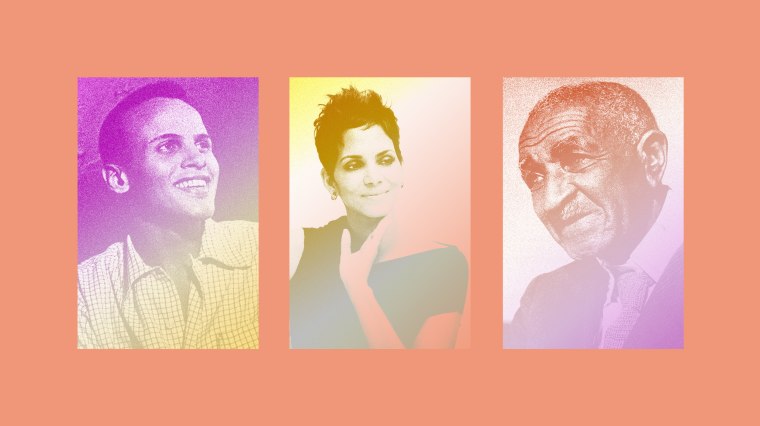When I was growing up, I lived in a community of me. I was the only other child with a disability that I knew. I'd never met an adult with a disability. There were no prominent people with disabilities on television or in books that I could see. The most I knew about disabled people's history was a small section of my 11th grade U.S. history course about the passage of the Americans With Disabilities Act of 1990. This landmark legislation ensured that people with disabilities had protections against discrimination.
Black history and disabled history are intertwined. The disability rights movement took cues from the civil rights movement.
According to the version of American history I was taught in the public education system, it's as though people with disabilities didn’t make any significant contributions to our society. The same was largely true for African Americans, a major difference being that we use February to commemorate Black History Month and celebrate African Americans' contributions to American history.
When you combine race with disability, physical as well cognitive, it renders the Black disabled experience as one of erasure. In a sense, to be Black and disabled in America is to be invisible. Yet when you look at Black history, there is an undeniable link to disability; some of our greatest Black heroes and heroines have been disabled.
To name just a few: Academy Award-winning actress Halle Berry has diabetes and 80 percent hearing loss in one ear. Actor and civil rights activist Harry Belafonte has dyslexia. Agricultural scientist and inventor George Washington Carver had breathing disabilities and health issues stemming from a bout with whooping cough.
It’s hard enough being Black in America. To add another marginalized identity paves the way for additional hardship. So Black people may be hesitant to identify as disabled for fear of further discrimination based on that identity. This is why we should honor the legacies of disabled Black history makers as a means to stand up against this double-headed monster of ableism and racism that leaves us ashamed of our identities.
Disability rights activist Anita Cameron believes an inordinate number of African American history makers have disabilities, but that the social stigma around disability is so pervasive numerous Black icons have chosen not to highlight or have even concealed their disabilities out of shame.
"Our numbers may be even higher, but due to ableism and stigma around disability, including fear of discrimination, many Black people don't want to admit that they are disabled," she says.
One of the biggest historical icons, the abolitionist and women’s rights activist Sojourner Truth, had a disabled right hand. But she often “negated" that fact — appearing in pictures holding knitting needles, for instance, to suggest she was able to use it — so she wouldn’t appear as “weak.” As a slave, Truth’s master initially promised her and her daughter freedom but stated her right hand reduced her productivity.
Indeed, Black history and disabled history are intertwined. The disability rights movement took cues from the civil rights movement and implemented some of the same methods of peaceful protest to fight for equal rights. During the pivotal 504 protests, where disabled activists in the 1970s held 25-day sit-ins and occupied federal buildings, the Black Panther Party provided hot meals and assistance to the protestors.
And some civil rights leaders were parts of both communities, such as Fannie Lou Hamer and Barbara Jordan, both of whom had disabilities. Hamer's stemmed from polio, and Jordan had multiple sclerosis, which made her a wheelchair user. Hamer developed more disabilities after being beaten in jail by the police, sustaining kidney damage, a blot clot in her eye and a permanent limp.
Disability affected the lives and achievements of many of these Black icons; many came not despite their disabilities but partly because of them. Having a disability shapes you into the person you are and the one you're destined to be.
Maya Angelou, for example, didn’t speak for five years as a result of a disability called selective mutism. This undoubtedly influenced her poetry and captivating ability to inspire people with her written words. Feminist writer Audre Lorde was legally blind and disabled due to cancer. She wrote “The Cancer Journals” detailing her struggles with cancer and how it influenced her advocacy as a feminist and lesbian.
We should do more to ensure that history recognizes the influence of disabled history makers. Since our society fails to do enough to acknowledge both communities' significant contributions, it is up to us to amplify Black disabled voices and both groups’ histories. After all, Black history is disability history.
I decided to take action myself by creating the #DisabledBlackHistory campaign. It's a social media initiative highlighting the milestones of disabled African Americans, unsung and famous alike.
Though disability isn't often celebrated in discussing its impact, we can challenge the notion that disability is a negative identity hidden at all costs. And the impact of disabled African Americans should no longer be denied or swept under the rug. It should be commemorated and honored as a part of the larger tapestry of American history. As we observe Black History Month, let's explore all facets of who we are and the greatness that lies within people with disabilities.



